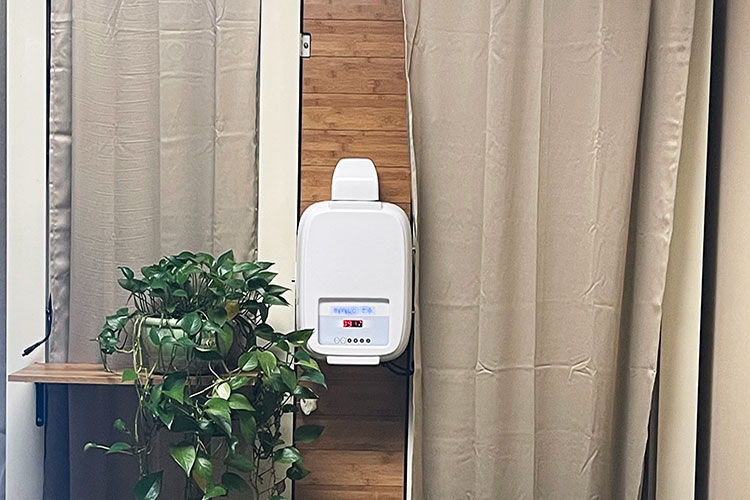Allergens & Indoor Pollutants at Home
Dr. Tatyana's Health and Wellness Blog
Treating the whole person to restore optimal health. Check back often for up-to-date news and information about acupunture and Chinese medicine.
Most Recent Posts ...
Posted on: 5/12/2025
Posted on: 4/28/2025
Posted on: 4/14/2025
Posted on: 3/31/2025
Search All Blog Posts
Blog Post Archive Categories
- Breathe Easier and Feel Better: The Benefits of Salt Room Therapy
- The Hidden Toll of Alcohol: How It Disrupts Sleep, Triggers Anxiety, and Leads to Dependence
- Why Working with a Qualified Medical Professional is Essential for Weight Loss
- How Acupuncture Can Help Reduce Fear and Anxiety Caused by Stress
- Boosting Metabolism During Menopause: How Acupuncture Can Help
- The Science Behind Acupuncture: How It Works and What Happens in Your Body
- The Hidden Dangers of Overusing Supplements: Are You Taking More Than You Should?
- The Importance of Exercise and How to Stay Motivated for a Healthier You
- The Power Trio: Vitamin D3, Omega-3, and Probiotics - Essential Daily Benefits
- Suggestions: Frequently wash bed linens in hot water, use hypoallergenic mattress and pillow covers, remove extra pillows, blankets and stuffed animals, maintain a low humidity environment, and increase air ventilation Pets: Cat and dog hair and dander can collect on many surfaces including counters, floors, and soft surfaces like bedding, carpets, and upholstered furniture
- Suggestions: Wash pets weekly, clean and vacuum surfaces frequently, utilize air filtration.
- Suggestions: Professional pest removal or management (including placing traps, sealing entry points, or rodenticide), removal of sources of food, shelter, and water (cleaning up messes, storing food in chew proof containers, and regularly taking out the trash), removal of pet rodents from the home.
- Suggestions: Professional mold remediation, adequate ventilation which may include installation and proper maintenance of central HVAC systems, fix water leaks and repair damaged areas, removal of visible mold.
- Suggestions: HEPA air purifiers, use personal protective equipment and ensure good ventilation when painting or using chemicals, replace gas stoves with electric ones, remove woodburning stoves and fireplaces, ensure properly maintained and functioning HVAC systems
- Suggestions: Choose alternatives with fewer chemicals and more natural based ingredients, use plastic-free and chemical-free cookware, using appropriate cooking techniques (i.e., appropriate heat levels for different oils, not charring foods), install and use kitchen range hoods
- Suggestions: Ensure adequate ventilation while performing hobbies, use HEPA air purifiers, have a space outside the home dedicated to doing hobbies.
- Suggestions: Smoking cessation or implementing smoke free homes and vehicles, ensure and use proper ventilation.
- Suggestions: Proper ventilation and maintenance of air filters, periodic use of commercially available air cleaners (i.e., ozone generators), and periodic checking of levels of radon, carbon monoxide, and nitrogen dioxide within the home.
Allergens & Indoor Pollutants at Home

Breathing is essential to life. Therefore, it makes sense that what we breathe in can impact our health. People spend up to 90% of their time indoors, with roughly 70% of their day spent in their home.1,2 This makes air quality within the home an important contributor to health. Some of the things that can affect indoor air quality are allergens found within the home, indoor pollutants from items used or found within the home, and particles from outdoor air that have made their way inside.2
Allergens
Allergens can be found anywhere within a house, but the bedroom is one of the main places people are exposed. The most common allergens found within the home and ways to try and reduce exposure are:3–5
Dust Mites: Dust mites are found in house dust, they are more common in humid environments, and tend to collect on things like carpets, beds, and upholstered furniture.
Rodents: Hair/dander, urine, and feces from pests (rats, mice) as well as house pets (rats, mice, gerbils, guinea pigs, hamsters)
Mold/Fungus: Homes that may be more likely to have mold allergens include those that are older, have previous or current water damage, are located in humid environments, or that lack or have improperly maintained ventilation systems (HVAC systems – heating, ventilation and air conditioning).
Indoor Pollutants
Indoor pollutants come from many of the items we have or things we use and do within our home. These pollutants tend to be more of a concern with contributing to asthma symptoms but can also cause or contribute to allergies in sensitive individuals.1,2
Household factors: Water damage, HVAC systems, renovations/repairs/building materials, new furniture or carpets, gas stoves for cooking, woodburning stoves or fireplaces, unvented space heaters
Chemicals: Cleaning products, chemicals for pools/hot-tubs, candles, cooking and cookware.
Hobbies: Arts and crafts, model building, painting
Smoking byproducts: Smoking, secondhand smoke, vaping.
Outdoor air particles: These include allergens like pollen (from trees, grass, weeds) and molds (see IFM’s Environmental Mold Exposure handout), as well as pollutants like smoke from wildfires, exhaust fumes, radon gas, other chemical fumes from nearby industrial facilities (i.e., waste management, power generation), etc.6
If you want to find out more about how functional medicine can help you with allergy please contact our office 425-785-1817.
REFERENCES
1. Seguel JM, Merrill R, Seguel D, Campagna AC. Indoor air quality. Am J Lifestyle Med. 2016;11(4):284-295.
doi:10.1177/1559827616653343
2. Practice B on PH and PH, Division H and M, National Academies of Sciences E. Sources of Indoor Particulate Matter. National
Academies Press (US); 2016. Accessed October 27, 2021. https://www.ncbi.nlm.nih.gov/books/NBK390370/
3. Salo PM, Wilkerson J, Rose KM, et al. Bedroom allergen exposures in US households. J Allergy Clin Immunol. 2018;141(5):1870-
1879.e14. doi:10.1016/j.jaci.2017.08.033
4. Matsui EC, Abramson SL, Sandel MT. Indoor environmental control practices and asthma management. Pediatrics.
2016;138(5):e20162589. doi:10.1542/peds.2016-2589
5. Ahluwalia SK, Matsui EC. Indoor environmental interventions for furry pet allergens, pest allergens, and mold: looking to the
future. J Allergy Clin Immunol Pract. 2018;6(1):9-19. doi:10.1016/j.jaip.2017.10.009
6. Air pollution. Accessed November 3, 2021. https://www.who.int/westernpacific/health-topics/air-pollution
Version 5© 2022 The Institute for Functional Medicine




